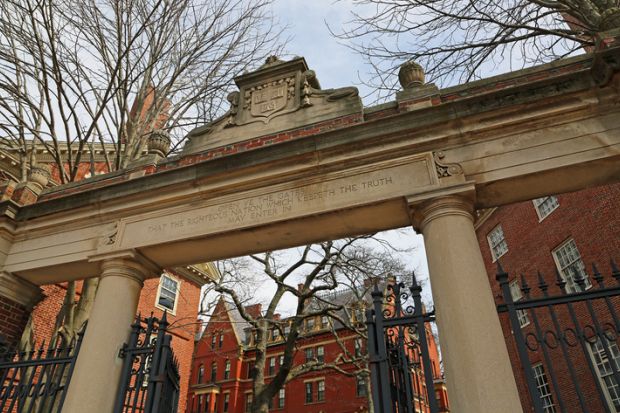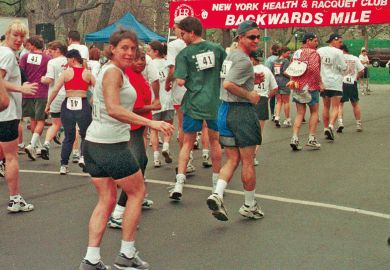How to Write a Resume That Stands Out
You finally found it! The perfect job for you. Now, all you have to do to get the process started is to submit your resume. The problem is that hundreds of your peers are probably thinking exactly the same thing. How do you stand out?
You finally found it! The perfect job for you. Now, all you have to do to get the process started is to submit your resume. The problem is that hundreds or even thousands of your peers are probably thinking exactly the same thing about exactly the same job. So how do you create a one-page document that will make you and your accomplishments stand out from the crowd?
Your resume is a key part of the job application process: it is the first document that an employer reviews to determine whether they will interview and eventually employ you. Remember that employers often have very limited time to perform this duty. Crafting a strong resume really matters!
Resumes communicate who you are and what you have accomplished. They may be the only document an employer sees to evaluate your record before making a decision to move forward with your application, or they may be used in conjunction with resources like LinkedIn or professional networking profiles and/or a cover letter. A resume that “stands out” in a positive way is one that has been written thoughtfully, clearly and concisely, effectively communicating your abilities and strengths in a very brief space.
Six basic tips will help you build an outstanding professional resume. Note that resumes may vary by professional field (e.g. engineering vs. non-engineering), by location or by other factors such as professional degree. These tips are designed around some of the most common sections and most useful points for resumes across different types.

Tip 1: How to Write an Education Section that Stands Out
The education section demonstrates that you have the academic qualifications for the position. The key questions you should ask yourself while writing this section is, “Have I clearly communicated the strongest and most relevant aspects of my educational experience?” The next question is, “Is this section organized in a way that is easily readable by the employer?”
The education section is important for all applicants but may be weighted differently depending on how long it has been since you graduated from a degree program. For instance, an employer may have a different level of interest in the educational history of a college senior, compared to someone who has been professionally working for several years after college. Understanding this fact may influence where you choose to place this section on your resume.
In general, you should include all of the higher education that you may have had, including undergraduate, graduate, or professional schooling. You may also consider including online courses, certificates, and completed programs through companies like Coursera. Most people list their experiences in an order called reverse chronological, meaning that they list the most recent experience first, and work backwards down the page.
For each listed school, provide the full name of the school or online program, the years of your attendance, your major or majors, if applicable, as well as a minor if applicable. Include the type of degree received (e.g. a Bachelor of Arts or Master of Science) and the year of graduation. If you are graduating soon, include the month and year of graduation so employers know when you will be available to work. If you have studied abroad, include the institution, program of study, and any relevant coursework.
You may want to include which semesters you qualified for special academic recognition, if any. Other special awards, scholarships, or competitive grants can also be listed in this section. If you have non-academic awards, such as for sports or community service, you may choose to create a separate section of your resume for honors and awards.
Tip 2: How to Make the Experience Section Stand Out
Along with education, your experience is one of the most important ways to show that you are qualified for a position. Use this section to clearly convey your strongest professional experiences, whether paid or unpaid. Be sure to give detailed aspects of your roles and responsibilities for each listed position. Emphasize any relationships or similarities between your past experiences and the job you want. You should also include the start and end dates of your involvement with each organization, and any key accomplishments from the role. Don’t forget to include where the company is located, including city and state/province, or even country if different from your home country.
Ask yourself: while involved with the company, did I win any awards, get any special recognition, make new discoveries, start a new program? If so, what happened and what were the results? Quantify your experiences when you can! As the expression goes, “Show don’t tell.” In other words, you can more effectively convey a point by giving concrete examples, rather than through vague descriptions. Consider the following examples.
Instead of:
Improved worker productivity significantly, leading to recognition from upper management.
(A resume reader may ask: What does ‘improved’ mean? What does recognition mean? How much have you improved it by?)
Improved quarter returns by 25%, exceeding projections and leading to the Top Manager Award, given to only one manager in the company per year.
When it comes to language, be honest about your job functions while thinking of professional ways to present your experiences.
Sometimes people fall into a trap of thinking that their job or internship experience won’t sound impressive enough to list. The job may have felt like “sitting at a desk, answering the phone.” True, but you may have been performing other responsibilities or developing useful job-related skills without realizing that you were!
When you were at a desk, were you at the FRONT desk? Were you the only person or the main person in this position? Were you overseeing anything while you were sitting there? Were you the sole person responsible for any tasks? Did you have to learn how to deal calmly and confidently with any customer issues? Did people occasionally ask you to take on additional responsibilities, even for a short time?
It is fair to say that a person sitting at a front desk, may have been MANAGING the front desk, or even managing the desk when the person’s boss was away. Time during which an individual is placed in charge of a business or an office, even if for a limited time, can convey responsibility to a prospective employer.
Look at your accomplishment bullet and ask yourself:
- What did I do in the job?
- Using what?
- To what extent or impact?
Sometimes you may need to pare down your list in order to avoid making your resume too lengthy. Try to select the accomplishments based partly on how impressive they are and partly on how well they relate to the position you want. To describe your experience, always use more than one sentence or bullet. That said, word economy in your bulleted descriptions is also important. Try to keep each bulleted description or sentence to one or two lines at most. You can often rephrase a description, eliminating words while keeping the meaning. The more information you can present clearly and concisely within the short resume format, the more the employer will understand what you can do for them.
Remember that by providing relevant details in each statement of your experience, you will give the employer enough information to evaluate you and also provide them with ideas of what they might want to discuss with you in an interview.
Tip 3: How to Create a Leadership and Activities Section that Stands Out
For many people, especially students and recent graduates, a Leadership & Activities section can be a fantastic differentiator for your resume. If you have not been in the workforce for long, or if you have only worked summers and part-time, then you may not have much relevant content to add to your Experience section. A strong Leadership & Activities section can help you fill that gap while also telling an employer something about you as a person.
When creating the section, you should first consider what student organizations and activities you would want to include. Then, you should consider what you would want to write about each one. In general, this section is much like the Experience section, except that it is about what you have done in a personal, rather than professional, setting.
Of course, because student organizations and activities are personal, you should be careful about which ones you choose to list; they should be appropriate to a professional setting. For example, you should probably not choose to share that you were chosen “Top Drinker” of your college’s “Beer Keg of the Day” club. On the other hand, if you volunteered at a food bank, wrote for a school publication, or had a membership in an honor society, those accomplishments would be worth sharing.
Most importantly, you should include student organizations and activities where you have made significant contributions or held leadership positions. Just as you did in the Experience section, you should think about what you did in the organization, any responsibilities you had, any skills you used, and any knowledge you gained. If you made improvements to the student organization or activity, definitely include concrete examples. Make sure to consider if any of your experiences with student organizations and activities could be related to the position you are applying for. Could any of the skills you have learned be useful in the job?
Because student organizations and activities can offer students leadership opportunities and experiences that are often limited to experienced professionals in companies, this section is your chance to show not only that you are qualified for the position but that you have even greater potential. Make the most of this opportunity to show the employer what you can do!
Tip 4: How to Highlight Your Skills
Another important component of what defines an attractive candidate in the modern economy is their skill set. Because employers want people who can quickly start being productive, they care about what skills a job prospect has, particularly in certain technical fields. In most cases, skills are incorporated into the Experience section, if you acquired skills as part of your internship or job, and in the Education section, if you obtained the skills through coursework, research, or projects. Sometimes people with additional skills, such as technical skills, foreign language, or certifications obtained outside of university, will place them into a separate section at the end of the resume. Whichever format you choose, you still need to emphasize the skills you have, so that an employer can easily see how you can help them.
You should ask yourself a few important questions. What skills do I have? What skills are my target employers looking for? Are my skills hard skills (i.e. technical, like computer programming) or soft skills, such as the ability to listen?
Make a list! Separate the skills into hard skills and soft skills. What skills are most in demand (on both lists) for the position you are interested in (One good way to decide this is to look at job listings for many similar positions and note how often a particular skill is listed.)? How can you highlight your proficiency in these skills?
Lead with your strongest skills and/or the ones that seem the most marketable. Let’s say you know the programming language Python. How well do you know it? How many years have you used it? Do you have any specialized knowledge and ability that may set you apart from a competing applicant? Do you have demonstrations of your work anywhere for a prospective employer to see?
Here’s an example of a skills entry that might be included into the Experience section:
Programming: 8 years of experience with Python and similar scripting languages, wrote MyFirstPythonProject software available on GitHub
Useful tip: Artists may have portfolios for their artistic work. Examples of appropriate work, such as for coding, may not be a bad idea to have available in addition to a resume!
Even if your field is not technical, you may still have important hard skills. Do you have experience with popular office software, such as Excel, PowerPoint, or Access? Do you know any foreign languages, even at a basic level? Think about not only what might be required in the day-to-day performance of the job, but what other skills could potentially be useful to the employer.
You will want to include all the relevant skills to demonstrate your qualifications, without including too much less-relevant information which could distract from your message. Think carefully about which skills you want to include, and which could be left out. Remember to choose your words economically to maximize content in a minimum of space. With a little effort, your skills details can transform your resume from a simple list of accomplishments to a document that gets an employer thinking about all the great ways you could contribute!
Tip 5: Formatting and Making the Resume Look Professional
Believe it or not, the appearance and organization of a resume can greatly affect the response. The first hurdle for any resume is to get the employer to read it. An attractively presented, concise resume is easy for a recruiter to pick up. On the other hand, if a resume is 5 pages, written in 6-point font, a prospective employer may not think that it is worth the time to find a magnifying glass and read it. In most cases, a resume should not exceed one page (sometimes two pages, mostly for more experienced candidates, or in scientific and technical fields where publication lists can be lengthy), which has a few key sections that are separated from one another or clearly delineated.
Here are some suggestions to make the format stand out positively:
- Use 10-12-point font or larger. (10 point may even sometimes be too small, and the choice can depend on the chosen font.) Your audience should easily be able to read the size of the writing. Often prospective employers may not have perfect vision, so readability may create problems if the text is too small.
- Use a clean, professional-looking font. Don’t use fonts that are overly artistic and hinder the ability for the reader to understand them. Some find fonts like Times New Roman most clearly readable; others find competing fonts better. The font is just an aspect of the writing; don’t let it overpower the words themselves.
- Use respectable margins. Don’t try to deviate too much from 0.5 margins at either side. Also, don’t make the margins too large, beyond 0.75 or 1 unit on either side. Around 1 unit on the top and bottom should be acceptable.
- Use adequate spacing.
- Abbreviate months of employment.
- Include proper contact information. Most people include full name, address, email address and at least one phone number at the top of the document.
Tip 6: Revision and Review
One of the most important steps to writing a good resume is having others you trust look it over. A small spelling or grammar error on a resume could cause problems by making it seem like you lack attention to detail.
You can start with standard spelling and grammar checking programs. However, while these programs are very helpful, they are not enough by themselves. For example, the programs may not flag errors with homophones (e.g. hair and hare). They also have difficulty with uncommon, technical, or foreign words that may not be in their dictionaries. In addition, they are not looking for formatting inconsistencies or at the overall appearance of the resume. While computer programs can help with many issues, there is still no substitute for the human eye.
Start by printing a copy of your resume and looking for errors and inconsistencies yourself. Then, present copies to others along with a description of the job or educational opportunity that you are applying for. When presenting your resume to others, consider at least two kinds of people: a peer, and an experienced professional or teacher. Each may identify different issues with the resume.
Ask the reviewers to provide two types of notes: technical revisions and feedback on the writing, organization and effectiveness of the resume.
Once you get feedback, discuss it with them for a few minutes. Remember, don’t take constructive criticism personally! They are trying to help you, and their points of view may be similar to that of the employer. Your goal is to create a resume that most people will appreciate.
Once you obtain proper feedback, you can work on improving your resume. Try to incorporate your reviewers’ suggestions. Their ideas may even make you think of other ways to improve your resume! Most importantly, always remember that once you have made your revisions, review your resume again before you send it out!
The stronger your resume, the better your chance of getting an interview and landing a meaningful job. Just by following these simple tips, you will be well on your way to resume success, creating a clear, detailed, and concise document designed to impress employers. So, get writing and get yourself noticed!
A good resume can help you land an interview, but even minor errors can take you out of the running. Schedule an appointment with a counselor to ensure it will be effective.
Quick Resume Tips:
- Use the position description to decide what to include.
- Pick a standard and consistent format.
- Describe your experiences with specificity and strong action verbs.
- Record accomplishments and contributions, not just responsibilities.
- Revise carefully!
- Don’t include personal information about your age, religion, health or marital status.
- Photos are generally not preferred for U.S. resumes.
- Typically, you will not be expected to share past salary information on a resume.
- Employers assume that “references will be available upon request,” so you don’t need to include them on your resume unless asked.
- Employers may use keyword scanning on resumes, so know what words are relevant to the industry and position and ensure they appear in your resume.
Resumes/CVs
- Utility Menu
GA4 tracking code

- CARAT (Opportunities Database)
- URAF Application Instructions
- URAF Calendar
Preparing a Resume
Many applications require that you submit a resume. Typically, the resume will be either one or two pages; it is important to adhere to this page limit. Even though you have achieved some incredible things during your time thus far at Harvard, it is important that you tailor your resume to the opportunity at hand. This does not diminish all of your varied experiences, but rather it shows that you really understand the opportunity and can highlight your most relevant qualities and experiences. For example, if you are applying to a high-level research program (ex. Herchel Smith), make sure that your resume is very research-focused. Or, if you are looking into a public service opportunity, you bet that you should be highlighting your public service experience (ex. extracurriculars, leadership, academics, etc.)! If you are applying to a program that emphasizes community as part of a research team, for example, feel free to include different community- or leadership-related experiences on your resume.
How to do this? Before turning to the draft itself, set some mini-goals for your resume to achieve within the greater whole of your application. After reading your resume, what do you want the selection committee to have learned about you? How does your resume contribute to the application as a whole? Does your resume complement other aspects of your application by giving context or additional detail (ex. your research proposal or statement)?
Be sure to go beyond listing responsibilities and dates and use deliberate and concise prose to demonstrate your qualifications for a particular opportunity. Also, keep both the impact and implications of the experiences on your resume in mind.
Impact: How was your contribution to this group/activity impactful? How was it different because you were part of it? This can be an aspect of your formal responsibilities or it can be an articulation of something less formal that you brought to the group. Also, what impact did this group/activity have on you? This doesn’t have to be an explicit articulation but it should be clear in how you describe the activity that it was formative in some way.
Implications: For students who study more esoteric areas of academia, this section can help non-experts understand your experiences. You do not have to sacrifice the sophisticated articulation of your research topic, but including some clarification that will help a non-expert understand the value of what you worked on. Remember, selection committees often include individuals from a broad spectrum of backgrounds.
For example: “Studied the functional implications of naturally selected polymorphisms in human TLR5. Potential implications for developing low-cost physiotherapy treatments to be deployed in emerging markets.”
A few things to remember:
- Once you have entered college, it is usually best to leave your high school experiences off of your resume, unless they are directly relevant (ex. research experience when applying to a research program). In some cases, first year students may find it helpful to list high school experiences.
- List opportunities that are indicative of your experiences, what you value, and how you choose to spend your time. Even if you are not able to include every experience, you will have lots of good fodder for an interview!
- Make sure that this resume is a specific fit for this opportunity and links your experiences to the selection criteria of the program.
- Be creative! You have lots of transferrable skills that might not be apparent to you at the start. Be sure to check out MCS resources to help break down your set of experiences into their most essential skills and building blocks.
- Please make sure that your resume is easy to read! Consult The Mignone Center for Career Success (MCS) for examples of good formatting and templates. The selection committee can tell when you have adjusted your margins and changed the size of your font just to squeeze more information into the page limit!
- Getting Started
- Application Components
- Interviews and Offers
- Building On Your Experiences
- Applying FAQs
- Resumes & Portfolios
There are two documents that you need to write that will usually be your introduction to a potential employer - a resume and a cover letter.
A resume is often the first document that you will send or hand to a potential employer or even someone who might advise you. You may (and should) spend time revising it continually, but you should always assume that the person seeing it for the first time may only spend 10-15 seconds looking at it. Think of the hiring manager who has been given a stack of 100 resumes (which have already been filtered beforehand by someone in HR), who is trying to fill one or two slots. She/he just doesn't have time to go in detail through every resume, so they'll cut it down to a small number of finalists. You've got one page to catch the hiring manager's attention for one of the few resumes to survive her/his first pass through that stack.
So, what will a hiring manager (who could be an individual engineer, scientist, programmer, etc. or a manager of a group who is hiring a summer intern) look for in that initial pass through the resumes. This can differ by organization, which is one reason we encourage students to connect to alumni for advice. However, let's boil it down to three big factors:
- They want an indication that you are "smart" - intellectually curious and able to figure out how to solve problems. The fact that you were admitted to Harvard will count for a lot, but don't ignore putting your GPA on there. If you don't put it on the resume, the hiring manager will likely assume that it is below whatever cut-off the company has or he/she has.
- The hiring manager will usually be hiring you to solve a problem during your internship (or a broader set of problems in your post-graduate employment). She/he will want to know if you have the skills necessary to solve that problem. So, the skills section of a resume, where you list programming languages, laboratory/machining skills, etc., is important. It is also important for you to show how you used those skills. You can do this by listing projects (not homework) from classes, clubs, or other outside activities. Students often list leadership in such activities, but it is probably more important to show evidence that you actually did the CAD design or programmed the app.
- The people hiring you want students who will be enthusiastic about the job. The projects on your resume help convey that, as do student organizations in which you are involved.
If you are submitting a resume to a job posting or company website, you will also include a cover letter. It is your opportunity to talk about why you are a particularly good match for and interested in the specific company and/or job. Hiring managers see a lot of resumes, which can start to look the same. But if you are particularly interested in a specific company or job, you get a chance to convey that in the cover letter.
There are multiple resources available to guide you in writing a resume. The Office of Career Services(OCS) has several excellent resources including a tutorial and some technical resume templates.
If you are just starting out, use those resources to write a first draft. Then, attend one of the many OCS resume workshops scheduled during first term, attend one of their drop-in sessions, or schedule a meeting with me.
Portfolios and Github
Let's say that the hiring manager has put your resume into the small group of resumes to be examined in more depth. At this point, if you have an online portfolio or github, they may be willing to spend the extra time to look at your accomplishments and work/project history in more depth.
If you are applying for a back-end programming job, have a well-organized github account that the hiring manager can search. Don't put anything online that you don't want the outside world to see. Obviously, if you did some work for a company, they will likely consider that proprietary. But this caution may also hold for research work under a professor, as he/she may want to keep it secret until published.
For most other types of jobs - front-end programming, engineering, design, etc. - a portfolio is a better choice for demonstrating your skills and activities in a format that is much more extensive than a resume.
Most students use templates provided commercial website companies such as Squarespace, WIX, Wordpress, Start Bootstrap, etc. - there are many out there. A free alternative available to Harvard students is OpenScholar .
In Student Career Development
- Internships (U)
- Part-Time Positions
- Post-Graduate Positions (U)
- Winter Break / Term Opportunities
- European Job Portals and Fellowships & Short Stays in Europe
- Internships (G)
- Post-Graduate Positions (G)
- Resumes, CV's, Portfolios
- Scholarships, Fellowships, Conferences, Etc.
- Selected Hackathons, Competitions, Etc.
- Government Lab Internships and Jobs
- Career Mixers
- Groups (Typically Startups) Looking for Team Members
Application Toolkit: Resume
On this webpage, you will find our advice and guidance for approaching the resume component of the application., instructions.
We require a resume as part of the application. Please limit your resume to 1 – 2 pages in length.
The following links are sample resumes from successful applicants in prior years. You do not have to follow the formatting used in these resumes, but all three are examples of well-organized, easy-to-read drafts.
Application Insights: Resume
- View All Application Insight Videos
Blog Advice
- Visit the Admissions Blog
- View All Resume Blog Posts
Overrated/Underrated Part 3
Continuing our Overrated/Underrated series, this week, we shift our focus to highlight some of the overrated approaches that we recommend applicants avoid as they craft their applications.
November 17, 2021
Overrated/Underrated Part 2
This week, we continue our Underrated Approaches to the Application series with some additional advice.
October 21, 2021
Overrated/Underrated Part 1
The J.D. Admissions team recently came together to offer their thoughts on some underrated and overrated approaches that applicants might take towards their HLS application. We hope you’ll find some of these nuggets useful.
September 9, 2021
Real Talk: The Resume
This week’s entry in the Real Talk series covers the resume.
August 25, 2020

Podcast Advice
Navigating law school admissions with miriam & kristi.
Miriam Ingber (Associate Dean of Admissions and Financial Aid at Yale Law School) and Kristi Jobson (Assistant Dean for Admissions at Harvard Law School) provide candid, accurate, and straightforward advice about law school admissions — direct from the source. They will be joined by guest stars from other law schools to discuss application timing, letters of recommendation, personal statements, and more.
- View All Episodes
Resume Workshop
Our Resume Workshop provides applicants with straightforward advice on how to craft their resumes with a reflective activity and guiding questions to consider.
Modal Gallery
Gallery block modal gallery.
- SUGGESTED TOPICS
- The Magazine
- Newsletters
- Managing Yourself
- Managing Teams
- Work-life Balance
- The Big Idea
- Data & Visuals
- Reading Lists
- Case Selections
- HBR Learning
- Topic Feeds
- Account Settings
- Email Preferences
How to Address a Resume Gap When Switching Careers
- Rebecca Knight

The do’s and don’ts of navigating a career transition that’s taking longer than you hoped.
The prospect of a new career can hold a sense of excitement. But what should you do if your job search has become a disheartening slog and the gap on your resume just seems to be growing wider by the day? What can you do to protect your mental health and rekindle your optimism for the future? In this article, the author offers practical advice to help you navigate your career switch when you’re worried about a widening gap on your resume.
You likely felt a surge of excitement when you made the decision to switch careers . But what should you do if your job hunt starts to become a tedious and disheartening slog — and the gap on your resume is growing wider by the day? How can you address your extended absence from the workforce without making excuses? And how can you stay motivated and resolved in the face of setbacks?
- RK Rebecca Knight is a journalist who writes about all things related to the changing nature of careers and the workplace. Her essays and reported stories have been featured in The Boston Globe, Business Insider, The New York Times, BBC, and The Christian Science Monitor. She was shortlisted as a Reuters Institute Fellow at Oxford University in 2023. Earlier in her career, she spent a decade as an editor and reporter at the Financial Times in New York, London, and Boston.
Partner Center
Brought to you by:

How to Address a Resume Gap When Switching Careers
By: Rebecca Knight
The do's and don'ts of navigating a career transition that's taking longer than you hoped.
- Length: 1428 word count
- Publication Date: Apr 4, 2024
- Discipline: General Management
- Product #: H0842J-PDF-ENG
What's included:
- Educator Copy
$4.50 per student
degree granting course
$7.95 per student
non-degree granting course
Get access to this material, plus much more with a free Educator Account:
- Access to world-famous HBS cases
- Up to 60% off materials for your students
- Resources for teaching online
- Tips and reviews from other Educators
Already registered? Sign in
- Student Registration
- Non-Academic Registration
- Included Materials
The prospect of a new career can hold a sense of excitement. But what should you do if your job search has become a disheartening slog and the gap on your resume just seems to be growing wider by the day? What can you do to protect your mental health and rekindle your optimism for the future? In this article, the author offers practical advice to help you navigate your career switch when you’re worried about a widening gap on your resume.
Apr 4, 2024
Discipline:
General Management
Harvard Business Review Digital Article
H0842J-PDF-ENG
1428 word count
We use cookies to understand how you use our site and to improve your experience, including personalizing content. Learn More . By continuing to use our site, you accept our use of cookies and revised Privacy Policy .
- Share on twitter
- Share on facebook
Harvard to resume standardised testing in admissions
Giving a major push to a growing trend, ivy league institution concludes that using the sat and act produces a net gain in equity.
- Share on linkedin
- Share on mail

Harvard University will resume its standardised testing requirement with next year’s admissions cycle, giving a high-profile boost to a growing trend of institutions concluding that the once-maligned tool looks better than its more regressive alternatives.
The Ivy League institution said it had made its decision – a reversal from a previous commitment to keep its test-optional stance for at least two more years – in part because of research by its own experts, who found that equity is improved when standardised tests are part of a wider set of considerations.
“Admission officers understand that not all students attend well-resourced schools,” Harvard’s dean of admissions and financial aid, William Fitzsimmons, said in announcing the shift, “and those who come from modest economic backgrounds or first-generation college families may have had fewer opportunities to prepare for standardised tests.”
That assessment is similar to the reasoning offered by another Ivy League institution, Dartmouth College , when it announced in February that it would resume using standardised tests in admissions. Several other institutions have joined in, including Yale and Brown universities.
Campus resource: How to ensure college admissions are equitable and accessible
Selective admission institutions in the US had been gradually moving away from standardised testing requirements in recent years, concerned that the exams harm low-income and minority students because the questions make biased assumptions and because wealthier students can afford professional preparation and the cost of repeated test attempts.
That position strengthened during the pandemic lockdowns to the point where the overwhelming majority of US colleges and universities were not requiring the exams, which commonly include the SAT and ACT.
But with the reconsideration led by Dartmouth and others – now including the symbolically important position of Harvard – opponents of standardised testing have expressed alarm that standardised testing is regaining traction.
The nation’s leading critic of standardised testing, the National Centre for Fair and Open Testing, or FairTest, has insisted that nothing fundamental has changed about the realities of such tests . “Using the SAT as the gatekeeper for higher education,” FairTest argued in response to the rising number of reversals, “turns out to test one thing above all else: existing station in life.”
Yet Harvard is home to some leading experts on race and economics, including Raj Chetty, a professor of economics whose team has assembled data showing that SAT and ACT scores strongly predict long-term student outcomes in college. Dartmouth cited Professor Chetty’s work, along with that of its own experts, in explaining its decision, and Harvard has now done the same.
In a statement accompanying Harvard’s announcement, Professor Chetty said he agreed that standardised tests were not an unbiased measure of student qualifications. “But the data reveal that other measures – recommendation letters, extracurriculars, essays – are even more prone to such biases,” he said. “Considering standardised test scores is likely to make the admissions process at Harvard more meritocratic while increasing socioeconomic diversity.”
Harvard has faced especially high scrutiny of its admissions policies arising from a lawsuit over its use of racial considerations in its admissions process – a practice that was long endorsed by the US Supreme Court until last year, when the now conservative-majority court reversed its position. Harvard, however, has also refused to end its practice of granting admissions preferences to students with alumni and donor ties – a group that is overwhelmingly white and has been accounting for more than a third of its entering class.
Register to continue
Why register?
- Registration is free and only takes a moment
- Once registered, you can read 3 articles a month
- Sign up for our newsletter
Or subscribe for unlimited access to:
- Unlimited access to news, views, insights & reviews
- Digital editions
- Digital access to THE’s university and college rankings analysis
Already registered or a current subscriber? Login
Related articles

Dartmouth resumes standardised tests mandate in admissions
After extensive investigation, Ivy League institution agrees that standardised exams such as SAT and ACT help equity more than hurt it

Standardised testing bounceback alarms critics
Yale and Dartmouth moves to mandate SAT and ACT submissions have long-time opposition alliance getting testy about possible reversals across academia

State lawmakers launch push to end legacy admissions in US
With little movement at federal level, local lawmakers test long-shot strategies to stop universities giving children of alumni a foot in the door

Legacy admissions face challenge after affirmative action ban
Echoing conservative Supreme Court, coalition of advocacy groups formally demands end to Harvard’s admissions preferences for relatives of alumni
Related universities
Harvard university, you might also like.

Queen’s to launch Canada’s first medical school admissions lottery
In a nation that struggles to get minority students into medicine, Ontario university eyes progress in broader admissions process

‘Local’ students just one in 10 at some elite universities
Durham again found to have lowest proportion of students from its own region, but highlights work to boost north east's low HE participation rate

Tibet’s easier gaokao offer for investors ‘exploitative’
Rights group criticises government’s move to use region’s lower university admissions standards to its advantage

Personal statements scrapped over growing ChatGPT use
Singapore Management University provost Timothy Clark says reforms will push students away from using generative AI in admissions statements
Featured jobs
Harvard and Caltech will require test scores for admission again
The colleges join other selective universities that have recently made similar decisions in the wake of new research.

Harvard College will require applicants to submit standardized test scores once again, becoming the latest highly selective school to reinstate the requirement after making the choice optional during the pandemic .
The California Institute of Technology also announced Thursday that, effective immediately, SAT or ACT scores will be required of applicants for undergraduate admission.
Harvard’s undergraduate school had previously said it would remain test-optional through the 2025-2026 application cycle. But on Thursday, it said students applying to the college for fall 2025 admission — hoping to join the graduating class of 2029 — will now have to submit standardized test scores as part of their admissions package.
Dartmouth College , Yale and Brown universities announced similar changes in recent weeks, after officials cited data suggesting that SAT and ACT scores were the best predictors of students’ academic performance at their schools — and that making the tests optional could further disadvantage applicants from more challenging backgrounds.
At Caltech, the highly selective private university in California, applicants’ scores weren’t visible to the admissions office under the moratorium imposed during the pandemic. But an increasing number of applicants had been taking the tests each year, according to university officials. More than 95 percent of the most recently enrolled class took the standardized exam.
Caltech officials said Thursday the decision reaffirms Caltech’s “commitment as a community of scientists and engineers to using all relevant data in its decision-making processes.”
Standardized tests have been debated for decades, with critics saying they added a roadblock for disadvantaged students, among other concerns. When the coronavirus pandemic shut down testing sites across the country, many colleges made the tests optional, and then continued to provide flexibility as they studied the issue.
The changes are another pivot in an unusually tumultuous time for selective college admissions amid fallout from last year’s Supreme Court ruling on affirmative action , and a disastrous rollout of a new federal financial aid form.
Standardized tests are just one part of a package of information applicants send, including grades, essays and recommendation letters. But millions of students study for, take and retake the tests in hopes of optimizing their scores.
Most students who enrolled at Harvard during the test-optional years had submitted test scores with their applications even though they weren’t required, according to the school.
Still, the shift could come as a surprise for some applicants who hadn’t planned to take a test.
In announcing its decision Thursday, university officials cited research by Harvard professors Raj Chetty and David J. Deming, and co-author John N. Friedman of Brown University, who used data from hundreds of universities and more than 3 million undergraduate students per year to explore socioeconomic diversity and admissions.
“Critics correctly note that standardized tests are not an unbiased measure of students’ qualifications, as students from higher-income families often have greater access to test prep and other resources,” Chetty said in a statement Thursday. “But the data reveal that other measures — recommendation letters, extracurriculars, essays — are even more prone to such biases. Considering standardized test scores is likely to make the admissions process at Harvard more meritocratic while increasing socioeconomic diversity.”
In “exceptional cases” when applicants are unable to take the SAT or ACT, the school will accept certain other scores, including AP and IB tests. The policy will be formally assessed at regular intervals, school officials said.
Harvard’s Faculty of Arts and Sciences Dean Hopi Hoekstra said the tests are a means for all students, regardless of their background and life experience, to provide information predictive of success in college and beyond.
“Indeed, when students have the option of not submitting their test scores,” Hoekstra said in a statement, “they may choose to withhold information that, when interpreted by the admissions committee in the context of the local norms of their school, could have potentially helped their application. In short, more information, especially such strongly predictive information, is valuable for identifying talent from across the socioeconomic range.”
Other highly selective schools remain test-optional, including the University of Chicago, Columbia University and the University of Pennsylvania, which announced last month that it would not require the scores for the 2024-25 application cycle. The University of California system is test-blind — schools don’t consider the scores as a factor in admissions.


COMMENTS
Harvard College Resumes & Cover Letter Guide. A resume is a concise, informative summary of your abilities, education, and experience. It should highlight your strongest assets and skills, and differentiate you from other candidates seeking similar positions. View Resource.
Always use your @college email account and check it frequently, even if you have enabled forwarding. Resume Sample. Firstname Lastname. If an employer asks for your SAT/ ACT scores or GPA, include in your Education section. 17 Main Street • Los Angeles, CA 92720 • [email protected] • (714) 558-9857.
Learn how to use the Harvard resume template to showcase your skills, achievements and education for formal jobs. See examples of summary, work experience, skills and other sections for different career fields.
Learn how to write a resume that highlights your abilities, education, and experience for different types of positions. Find tips, examples, action verbs, and resources from the Office of Career Services at Harvard University.
Learn how to write a resume that highlights your abilities, education, and experience for different types of positions. Find tips, examples, action verbs, and resources from the Office of Career Services at Harvard University.
No part of this publication may be reproduced in any way without the express written permission of the Harvard University Faculty of Arts & Sciences Office of Career Services. 8/21. Office of Career Services Harvard University Faculty of Arts & Sciences Cambridge, MA 02138 Phone: (617) 495-2595 www.ocs.fas.harvard.edu. Resumes and Cover Letters.
Harvard Extension School on Your Resume RESUMES AND COVER LETTERS. Write an Effective Cover Letter RESUMES AND COVER LETTERS Your cover letter is a writing sample and a part of the screening process. By putting your best foot forward, you can increase your chances of being interviewed. A good way to create a response-producing cover letter is ...
A resume is a concise and informative summary of your education, training, experiences, skills and accomplishments as they relate to the type of employment you are seeking. It should highlight your strongest assets and differentiate you from other candidates seeking similar positions. ... HARVARD.EDU EXPERIENCE ...
Keep a consistent format throughout your Harvard resume: Choose a professional, readable and accessible resume font. Select a resume template with stacked sections for an easier read. Keep a consistent margin of .75 inches on all sides to maintain balanced white spaces in your Harvard resume.
Published on September 7, 2022. The Only Resume Cheat Sheet You'll Ever Need was originally published on Idealist Careers. A lot goes into drafting a good resume. You'll want to make sure you're using the best format to showcase your skills and achievements, that you've carefully edited each section, and that the information you include ...
Abbreviate months of employment. Include proper contact information. Most people include full name, address, email address and at least one phone number at the top of the document. Tip 6: Revision and Review . One of the most important steps to writing a good resume is having others you trust look it over.
Cafeteria for resume assistance. Students and alumni may also have their resumes reviewed as part of an individual career coaching appointments. To schedule an appointment, please login to CareerConnect at https://hsph-harvard-See Sample resumes in the Career Resources Library. What's the difference between a resume and a CV?
Optimize your resume for applicant tracking systems. It is no secret that many employers, especially those which receive a high number of applications, use applicant tracking systems to scan resumes and cover letters for certain keywords or phrases. ... Harvard University 54 Dunster Street Cambridge, MA 02138 617-495-2595 [email protected] ...
Find guides and resources for writing resumes and CVs for academic and non-academic positions at Harvard. Learn from Harvard's Office of Career and Professional Development and other sources.
Preparing a Resume. Many applications require that you submit a resume. Typically, the resume will be either one or two pages; it is important to adhere to this page limit. Even though you have achieved some incredible things during your time thus far at Harvard, it is important that you tailor your resume to the opportunity at hand.
Use a 10-12 point font in a style like Arial, Calibri, Geneva, Helvetica or Times New Roman. Margins - Try to keep about 1" on all sides of the document, but edit to make your resume one page! Be consistent - If you put a heading in bold, make sure to put all of your headings in bold, etc.
08/23. Mignone Center for Career Success Harvard University Faculty of Arts & Sciences Cambridge, MA 02138 [email protected] careerservices.fas.harvard.edu. Resumes and Cover Letters.
Resumes. There are two documents that you need to write that will usually be your introduction to a potential employer - a resume and a cover letter. A resume is often the first document that you will send or hand to a potential employer or even someone who might advise you. You may (and should) spend time revising it continually, but you ...
We require a resume as part of the application. Please limit your resume to 1 - 2 pages in length. The following links are sample resumes from successful applicants in prior years. You do not have to follow the formatting used in these resumes, but all three are examples of well-organized, easy-to-read drafts. Sample 1.
Accelerate your career with Harvard ManageMentor®. HBR Learning's online leadership training helps you hone your skills with courses like Career Management. Earn badges to share on LinkedIn and ...
Harvard Faculty of Arts & Sciences Harvard FAS Mignone Center for Career Success Instagram YouTube Harvard University 54 Dunster Street Cambridge, MA 02138 617-495-2595 [email protected]
The do's and don'ts of navigating a career transition that's taking longer than you hoped. Length: 1428 word count. Publication Date: Apr 4, 2024. Discipline: General Management. Product #: H0842J-PDF-ENG.
Harvard University will resume its standardised testing requirement with next year's admissions cycle, giving a high-profile boost to a growing trend of institutions concluding that the once-maligned tool looks better than its more regressive alternatives.. The Ivy League institution said it had made its decision - a reversal from a previous commitment to keep its test-optional stance for ...
Harvard's undergraduate school had previously said it would remain test-optional through the 2025-2026 application cycle. But on Thursday, it said students applying to the college for fall 2025 ...
Here's an example of how to include job shadowing on a resume in a job shadowing section, for someone who observed a marketing manager: ABC Marketing Agency May 2024. Observed daily tasks of a marketing manager, including social media strategy development, content creation, and campaign analysis;